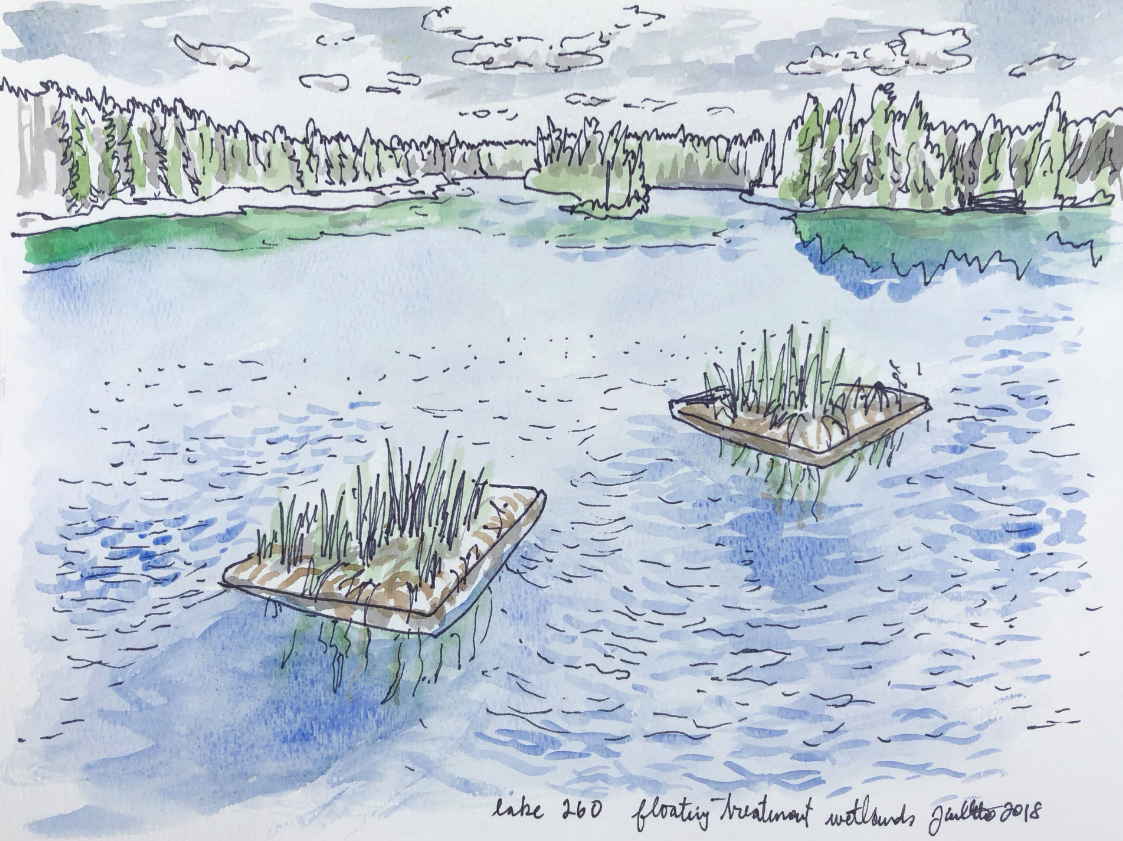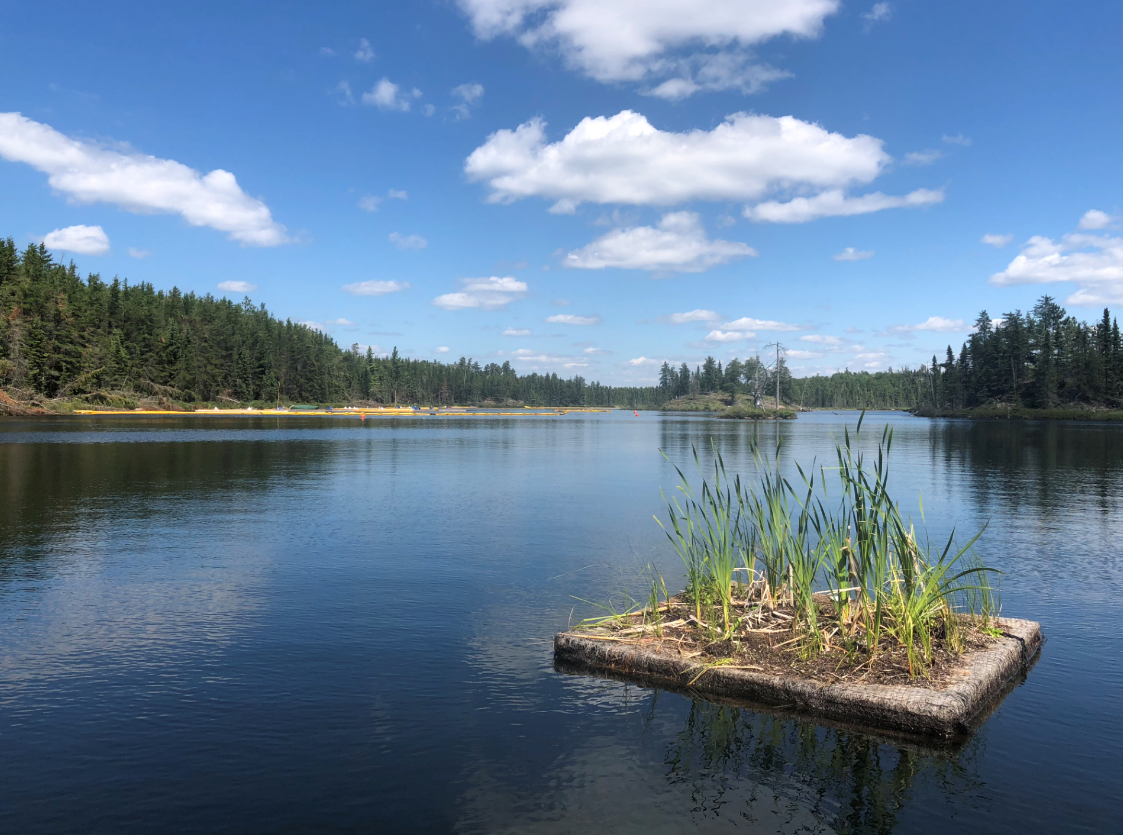Floating Treatment Wetlands: Keeping our fresh water clean and healthy
This short, engaging storybook takes you through what Floating Treatment Wetlands are, and how they could really help us keep bodies of fresh water clean and healthy.
Freshwater lakes around the world, especially shallow lakes, are in trouble.
Wetlands can improve water quality of storm water runoff and manage watershed nutrients, as well as treatment of wastewater and other industrial contaminants.

Floating treatment wetlands (FTWs) or islands are small artificial platforms that allow these aquatic emergent plants to grow in water that is typically too deep for them. The unique ecosystem that develops creates the potential to capture nutrients and transform common pollutants that would otherwise plague and harm our lakes into harmless byproducts.
We have just started exploring the role of FTWs in cleaning up lakes in Canada and at IISD Experimental Lakes Area.
This short, engaging storybook takes you through what FTWs are, and how they could really help us keep bodies of fresh water clean and healthy.

Participating experts
You might also be interested in
For Nature-Based Solutions to Be Effective, We Need to Work with Indigenous Peoples and Local Communities
Nature-based solutions have been praised as a promising approach to tackling the twin crises of climate change and biodiversity loss. But some Indigenous Peoples and local communities are questioning the legitimacy of the concept and what it symbolizes. It is time to listen to what they have to say.
Northwest Ontario Side Story: IISD Experimental Lakes Area Annual Report 2022-2023
This year's annual report is a celebration of all things creative at the world's freshwater laboratory, from the science to music, photography and theatre.
Freshwater connectivity can transport environmental DNA through the landscape
A new study conducted at IISD-ELA found that the movement of water between freshwater bodies can transport eDNA which complicates the question of how accurately it can be used to monitor species.
Microplastics now pervasive in Great Lakes, with 90% of water samples surpassing safe levels for aquatic wildlife: new studies
Data spanning the last ten years reveal that the Great Lakes basin is widely contaminated with microplastics, with potentially dangerous consequences for the wildlife that live within.